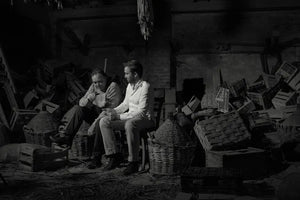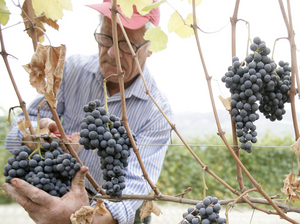Blog » Barolo
-
The Main Event: Vietti Cru BaroliVietti's Luca Currado worked tirelessly to continually improve the quality of his wines, and Barolo's reputation as a whole. These Nebbiolos from the most coveted Crus seem to receive praise year after year, but the 2019 vintage is especially impressive.Aside from being a banner year in Piedmont, 2013 cemented a shift in Currado's philosophy—now, the Barolo lineup is nearly exclusively aged in large format botti as opposed to small French barrique. (The Ravera was the first bottling to undergo this change in 2010, and the powerful Villero was the last in the range to do so in 2013).Many consider Vietti to have one foot in the traditional camp and one foot in the modern camp. In addition to aging in botti, the Baroli see long skin macerations (a requisite for the traditional category). If one aspect leans modern, it's their vineyard work, which is about keeping yields low and doing everything in their power by natural means to push ripeness higher. With the enviable lineup of vineyards, Vietti's lineup is always among the most collected in Piedmont.
-
Time Turned Back: Roagna Barolo & BarbarescoAt Roagna, throwback methods on vinification and aging meet modern sophistication of grace and translucency. Articulating how Luca Roagna's wines deviate from other names in the unanimous top tier of Piedmont can be challenging. But, again, the beauty of Nebbiolo from these adjacent regions has always extended beyond common vocabulary. Luca's words ton the combination of limestone and sand strike at the heart of the mentality at Roagna:"You find more finesse, more elegance, less color, less alcohol, and when we have less color and alcohol, we are really happy." — Luca Roagna
Longtime fans of Piedmont will recognize the enviable stable of prized vineyards here: Asili, Paje, Montefico, Gallina, Faset Pira, and Rocche. Native fermentation lasts ten days in large wood, finishing with a submerged cap ("cappello sommerso") for 60-90 days. Afterward, aging takes place in large, neutral botti. Instead of toasting by flame, casks are steamed to exclude any charring flavor. This cask aging takes place for 5 years before release.If you love taut Barolo and Barbaresco with intrinsic tannin melded into transparent wines of explosive aromatics ending with a wispy, ethereal ethos, you will be at the correct address. -
Piedmont Perfection: Giacomo Conterno Barolo
In 2019, Roberto Conterno released only one Barolo, the Cerretta from Serralunga d'Alba. Arione and Vigna Francia will be put into the Riserva Monfortino for later release. Though also located in Serralunga, Cerretta shares a soil composition reminiscent of what's found across the valley in La Morra, where more elegant and less statuesque Barolos are commonly seen. The 2019 has bright red and black fruits with incredible focus, delineation, and a crystalline sense of purity that I love.
The King of Wines and the Wine of Kings. If one producer was tied to this moniker, it's undoubtedly Barolo's Roberto Conterno. From Giacomo to Giovanni to Roberto, this estate has been the standard bearer for the grandest wines in Italy—Nebbiolo from Serralunga d'Alba.
Visiting with Roberto in November 2012 offered a glimpse into the genius behind his quiet and reserved exterior. Conterno's immaculate cellar and eye for detail, specifically with cleanliness, are unlike anything I've seen in person. The methods here are traditional through and through. Still, one could point to vineyard practices as relatively modern, with a reliance on coaxing maximum ripeness from vines—I find this to be a massive element in why the dark and tannic Nebbiolo of Serralunga's terroir exudes so much charm when poured.
Purchased in 1974 by Giovanni Conterno, the flagship Francia is about the melding of power and finesse. Arione debuted in 2015, and now, with four releases under the stewardship of Roberto, we get to see even darker and more intense Serralunga terroir, where iron-tinged minerality meets lavender, orange peel, and menthol.
.svg?v=162776257677185172071724397232)





